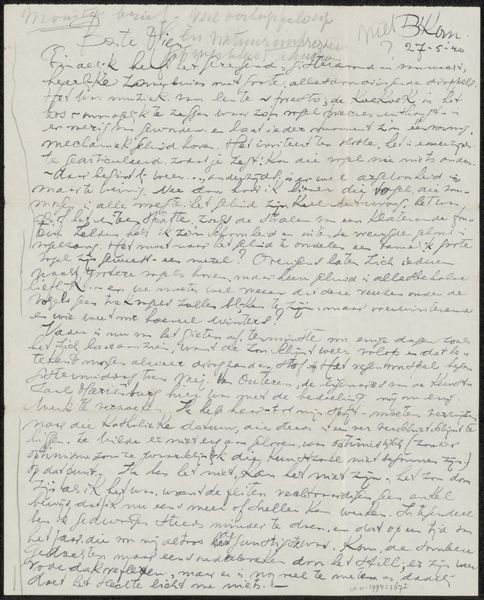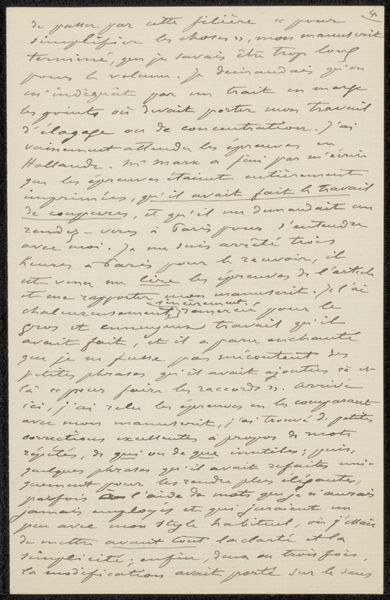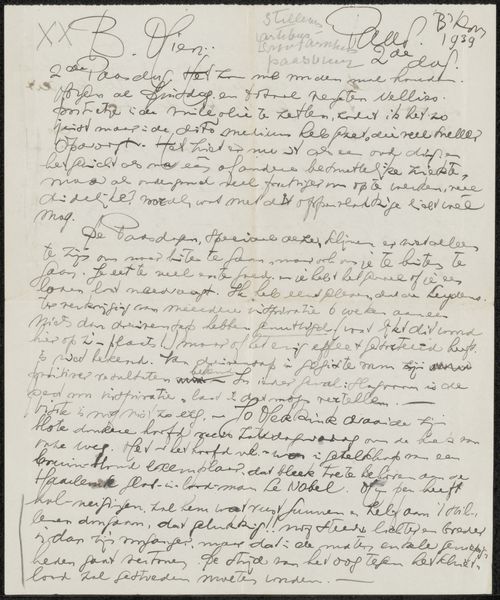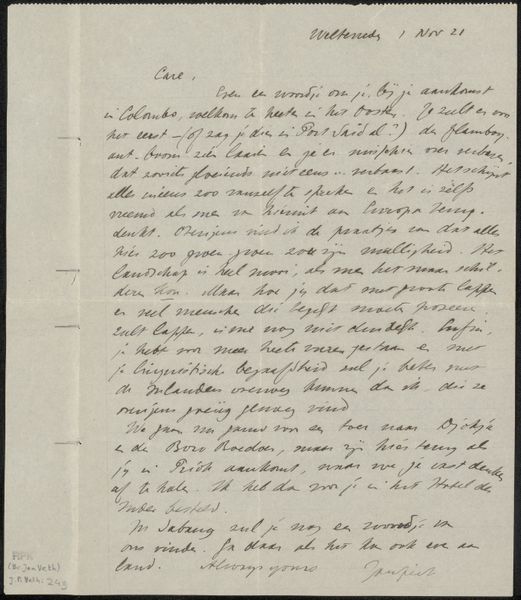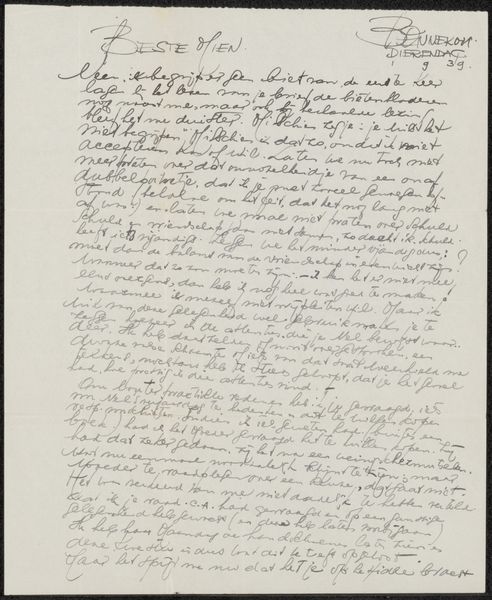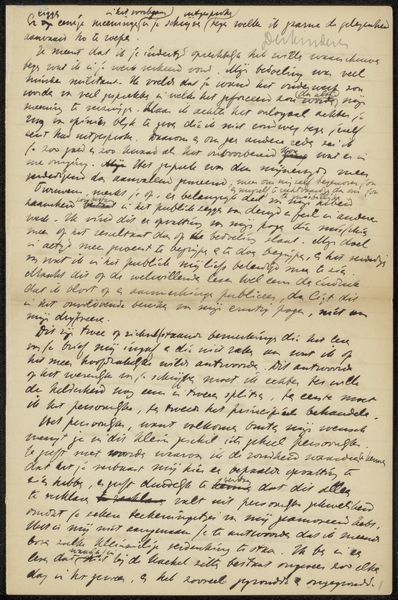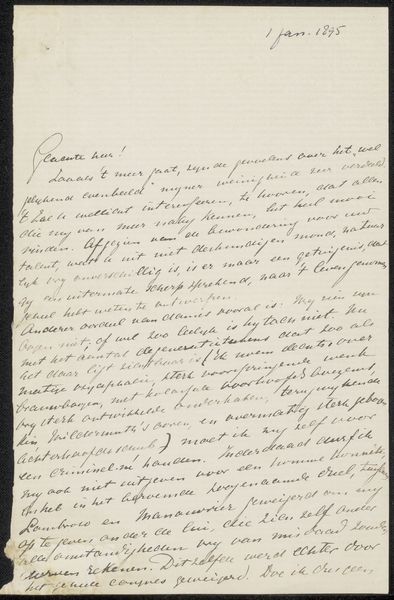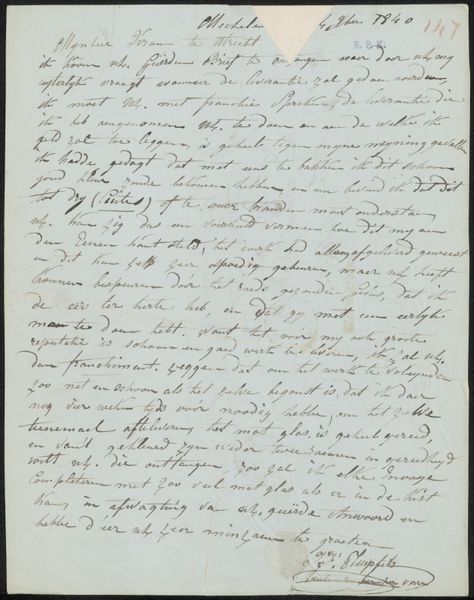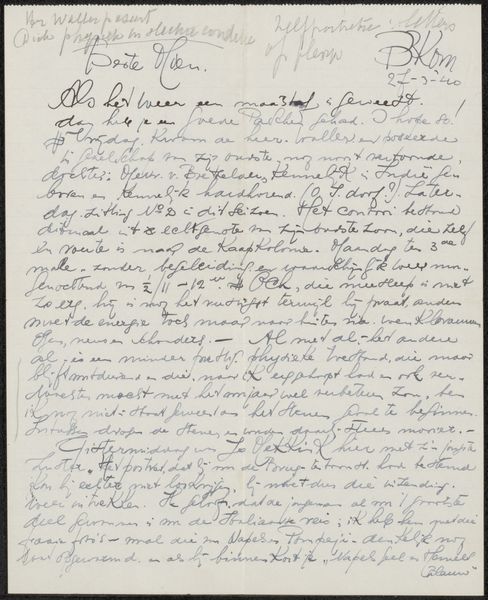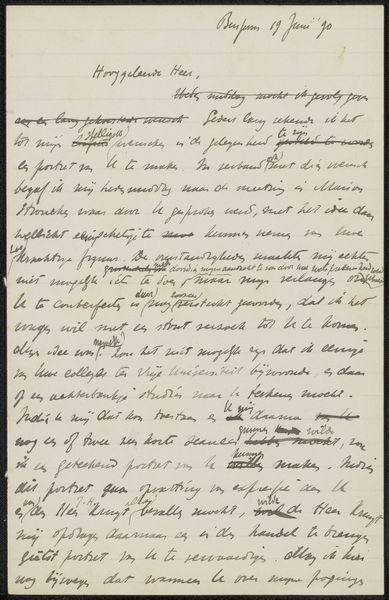
drawing, paper, ink, pen
#
drawing
#
paper
#
text
#
ink
#
pen
Copyright: Rijks Museum: Open Domain
Curator: We're looking at a fascinating artifact: a letter, possibly from 1835, titled "Brief aan Jean Baptiste Weenink." It’s currently held at the Rijksmuseum and attributed to Jan Frans van Dael. The letter is rendered in ink using a pen on paper. Editor: My initial reaction is to the visual texture – the dense, swirling script fills the page like an intricate pattern. It gives the letter a very tangible and personal feel, more like an artifact than a piece of correspondence. You can almost feel the writer's hand. Curator: Absolutely. The creation of such a letter was an event. Think about the cost of the paper, the ink. Penmanship was a vital skill; how one crafted such correspondence carried considerable social weight. It was about making time for it and thinking how best to project status. Editor: Exactly. It transcends mere communication. The very act of writing – the materials chosen, the painstaking application – elevates it to something crafted. Did the writer dash this off in haste or devote hours to the calligraphic beauty? You see in a flash the role labour and skill played in even seemingly banal everyday practices. Curator: Moreover, consider how institutions preserve and exhibit pieces of correspondence like these. What narratives do they craft and endorse when these materials are put on display? A single handwritten note gives an opportunity to see who was prioritised and whose daily practices are worthy of saving, or more likely, are saved at all. Editor: It's also about access, isn’t it? Who has the ability to read it now? Who even knows to visit a space where things such as letters become accessible? Curator: True. In this way, our act of analysing how these pieces are curated only creates new networks. But I would still like to know what Van Dael thinks Weenink’s reply will be. Editor: In seeing art this way we take what it represents with more consideration; how labour and history collide and settle, until they are once more unearthed in novel contexts.
Comments
No comments
Be the first to comment and join the conversation on the ultimate creative platform.
